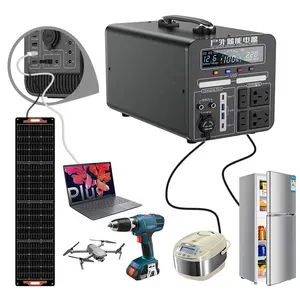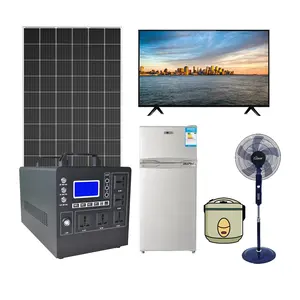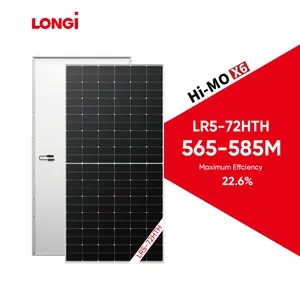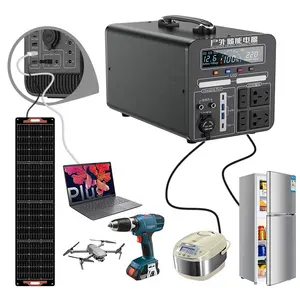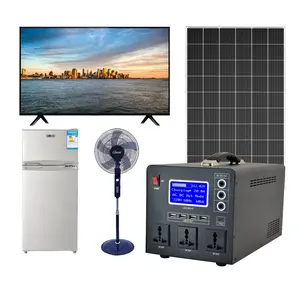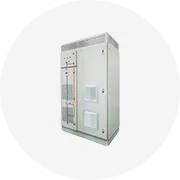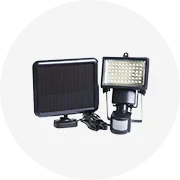Populair in uw branche






Hete Verkoop Echte Originele Gegoten Behuizing Stroomonderbreker Nsx100n F 3pnsx160n 250n 4P 630a Driefasige Mccb 400a
€ 116,45 - € 145,57
Min. bestelling: 5 stukken







Hot Verkoop Mini Stroomonderbreker IC65N Serie Lucht Schakelaar 1P
€ 3,61 - € 4,52
Min. bestelling: 10 stukken







Chint Mccb NXM-125H/3300 100a Met 3 Polen 3 Fase Europese Stroomonderbreker
€ 14,89 - € 16,75
Min. bestelling: 5 stukken




Wifi Miniatuur Stroomonderbreker Eenfase 2 Pole Wifi Mcb 16A 20A,32A,50A,63A 100A 6kA
€ 37,21 - € 46,51
Min. bestelling: 5 stukken







Gxpr Fabrikant Goedkope Prijs Hoge Kwaliteit GXB1-125 3P Draadloze 40A 63A 100A 6000A Tuya Wifi Smart Circuit Breaker
Klaar voor verzending
€ 27,44 - € 32,09
Min. bestelling: 1 stuk
Verzending per stuk: € 14,20













12V 24V Dc 60a 80a 100a 150a 200a 250a Thuis Zonne-Energie Systeem Waterdichte Stroomonderbreker Reset Zekering Inverter Dc Stroomonderbreker
Klaar voor verzending
€ 3,72 - € 4,65
Min. bestelling: 5 stukken
Verzending per stuk: € 5,36










Sspd Beste Koop Ezc 100A Lage Spanning Bescherming 2 Polen Thermische Stroomonderbreker
€ 6,96 - € 8,12
Min. bestelling: 1 stuk






Abb Miniatuur Stroomonderbreker Industriële Automatisering Gegoten Behuizing Origineel 3P Mccb 100a Enkele Fase Stroomonderbreker 32 1Pcs 36ka
€ 74,41 - € 79,06
Min. bestelling: 5 stukken






Gerelateerde zoekopdrachten:
gegoten stroomonderbrekerzhejiang stroomonderbrekerstroomonderbreker 100a 4pstroomonderbreker 100a 3pindicatie stroomonderbrekerbryant stroomonderbrekerdrie polige stroomonderbrekerstroomonderbreker 120ambc stroomonderbrekerduurzame stroomonderbrekermurray stroomonderbrekertripped stroomonderbrekeraustralië stroomonderbreker2p stroomonderbrekerstroomonderbreker 50a






Hoofdschakelaar Dubbele Pole 100 Een Enkele Fase Drie Fase IC65 Mcb Circuit Breaker G1 G2 G3 G4 Disjoncteur 16A 32A 63A 100A
€ 2,38 - € 18,60
Min. bestelling: 12 stukken






Hoge Kwaliteit 1a Tot 100a 1 2 3 4 Pole Plug-In Type Elektrische Zwarte Bakeliet Micro Mini Stroomonderbreker 125V 250V 380V 400V Ac
Klaar voor verzending
€ 4,66
Min. bestelling: 100 stukken
Verzending per stuk: € 9,40



Chint DZ158-125 80a 100a 125a 1 P 2 P 3 P 4P Ac Dc Mcb 1 Pole 2 Pole 3 Pole 80 Ampère 100 Ampère 125 Ampère Chnt Din Rail Stroomonderbreker
€ 2,05 - € 11,17
Min. bestelling: 100 stukken






Gol 80A 100A 125A Dc Mcb Dc Mini Stroomonderbreker Miniatuur Circuit Breaker 2P Icu 10KA
€ 1,48 - € 5,58
Min. bestelling: 10 stukken






Schneider Mccb Easypact Merlin Gerin 3P Cvs100b 100A Gegoten Geval Stroomonderbreker
€ 9,31
Min. bestelling: 1 stuk






Open Elektrische OL2-63 4P 100a Een Type Aardlekschakelaar Prijs 100ma Lage Spanning Van Aardlekschakelaar Elektrische Aardlekschakelaar
€ 5,31 - € 5,96
Min. bestelling: 100 stukken






40a 50a 60a 70a 80a 100a 150a 200a 250a 300a Mariene Zonnewagen Auto Audio Inline Automotive Stroomonderbreker
Klaar voor verzending
€ 3,96 - € 4,24
Min. bestelling: 1 stuk
Verzending per stuk: € 4,96






PowMr 20A 30A 40A 50A 60A 80A 100A Reset Zekering Houder met Handmatige Reset Inlinee Circuit Breaker voor 12/ 24V DC Schakelaar
Klaar voor verzending
€ 3,26 - € 3,91
Min. bestelling: 1 stuk
Verzending per stuk: € 15,22






Dc Mccb Stroomonderbreker 1P 2P 12V 24V 48V 250A Gegoten Case Batterij 100A 200A 300A 400A Auto Opladen Stapel Protector
€ 7,07 - € 14,17
Min. bestelling: 10 stukken






Hoge Kwaliteit Solar Pv Mcb Elektrische 2 Pole Dc Mcb 1000V 100a 125a Stroomonderbreker Voor Zonnestelsel
Klaar voor verzending
€ 2,80 - € 3,26
Min. bestelling: 5 stukken
Verzending per stuk: € 5,14



3 P 100A 240 V/415 V 50 HZ/60 HZ Circuit breaker MCB
Klaar voor verzending
€ 6,03 - € 6,70
Min. bestelling: 1 stuk
Verzending per stuk: € 10,22




Mccb Vecas MA02LE Serie Intelligente Rcd Rcbo Mccb Stroomonderbreker 100A 250A 400A 630A 3 Pole 4 Pole 50KA Ondersteuning oem
€ 13,96 - € 186,03
Min. bestelling: 100 stukken









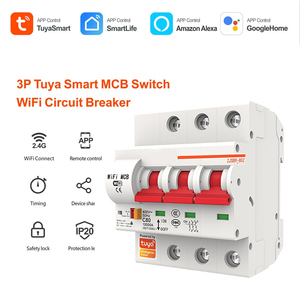
Tuya Wifi Slimme Afstandsbediening 3P 20a 25a 32a 40a 63a 80a 100a 125a Mcb Stroomonderbreker Voor Thuis Fabriek
Klaar voor verzending
€ 25,74 - € 31,94
Min. bestelling: 5 stukken
Verzending per stuk: € 6,28






Fabrieksprijs Mccb 2P Ac 63a 100a 125a 160a 250a 400a 630a Onderbreker Mccb 400V Gegoten Behuizing Stroomonderbreker
€ 5,59 - € 6,98
Min. bestelling: 1 hectare

Stroomonderbreker 100A 60 V 48 V 20 V 12 V DC AC Auto Circuit Breaker
€ 3,73 - € 3,91
Min. bestelling: 10 stukken






12 V 20A 30A 40A 50A 60A 80A 100A stereo Auto Audio Stroomonderbreker
€ 0,0094 - € 0,1861
Min. bestelling: 1 stuk






100A Stroomonderbreker Met Handmatige Reset Zekering Houder 100 Amp Voor Auto Audio Marine Boot Stereo Schakelaar Inverter Vervangen Zekeringen
Klaar voor verzending
€ 2,98 - € 3,54
Min. bestelling: 1 stuk
Verzending per stuk: € 16,75






Nxm Serie Mccb Chint Gegoten Stroomonderbreker NXM-125H/3300 80A 100A Mcb Miniatuur Stroomonderbrekers
€ 17,86 - € 18,24
Min. bestelling: 1 set











Abe103c Gegoten Behuizing Stroomonderbreker Abe 3P Mccb 60a 75a 100a 125a 3P Elektrische Stroomonderbreker Drie Fase
€ 5,77 - € 6,05
Min. bestelling: 10 stukken






Solar DC Stroomonderbreker Leverancier 2 Pole Hoogspanning 100A 400 V voor Zonne-energie Systeem
Klaar voor verzending
€ 10,75 - € 12,51
Min. bestelling: 10 stukken
Verzending per stuk: € 3,47






10ka Hoge Kwaliteit Dc 500V 1000V 2P 4P 80a 100a 125a Dc Mcb Mini Stroomonderbreker
€ 2,89 - € 3,26
Min. bestelling: 40 stukken






GEYA DZ47-63LE Elektronische Schakelaar 4P 30mA RCBO AARDLEKSCHAKELAAR ELCB RCD Stroomonderbreker 100A RCB0
€ 8,52 - € 12,78
Min. bestelling: 50 stukken


FR-CBI SX2-G3 hydraulische magnetische mini stroomonderbreker 100A
€ 1,87 - € 2,80
Min. bestelling: 48 stukken






Tmax CB Ce Gecertificeerd T1N160 Verstelbare Gegoten Geval Stroomonderbreker 3 pole 100a mccb
€ 8,38 - € 13,96
Min. bestelling: 10 stukken

Vier Fase MMC100N 100A Amps 4P 25KA Verstelbare Mccb Ce AC440V Elektronische Controller Fix Lucht Schakelaar Gegoten Case Circuit breaker
€ 24,18 - € 25,12
Min. bestelling: 10 stukken
Topcategorieën
Over stroomonderbreker 100a
Alibaba.com levert 10396 stroomonderbreker 100a-producten. Een brede verscheidenheid aan stroomonderbreker 100a-opties zijn voor u beschikbaar, zoals c, b en d. Ook kunt u kiezen uit thuis, industriële en beschermende stroomonderbreker 100a. En uit li, lsi en lsig stroomonderbreker 100a.En of stroomonderbreker 100a wit , zwart of rood is.
